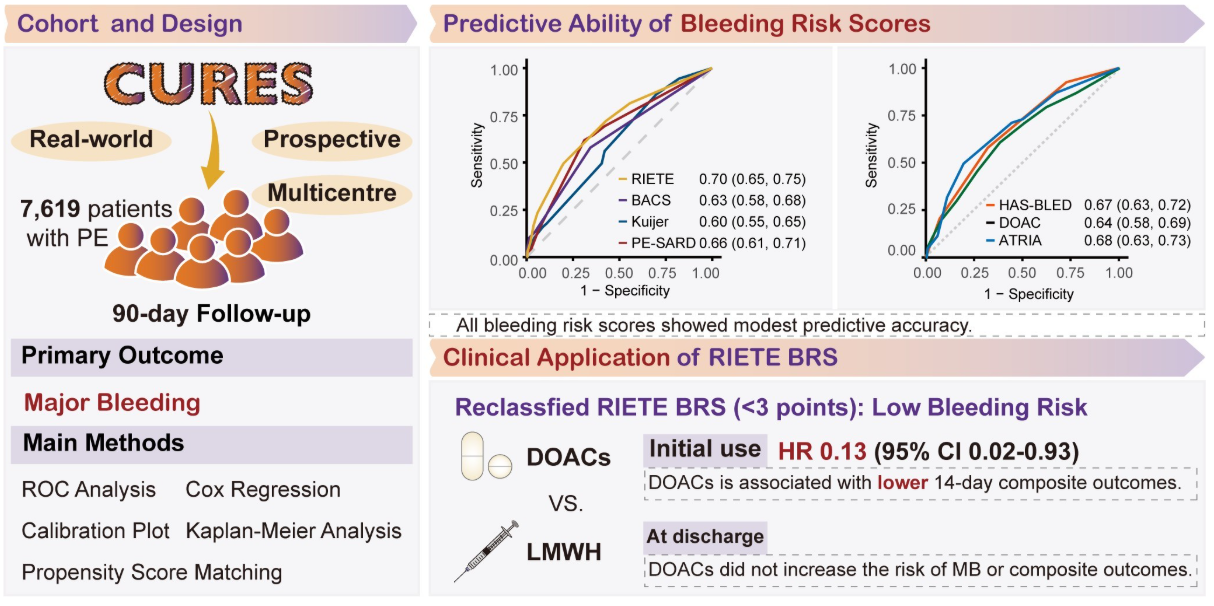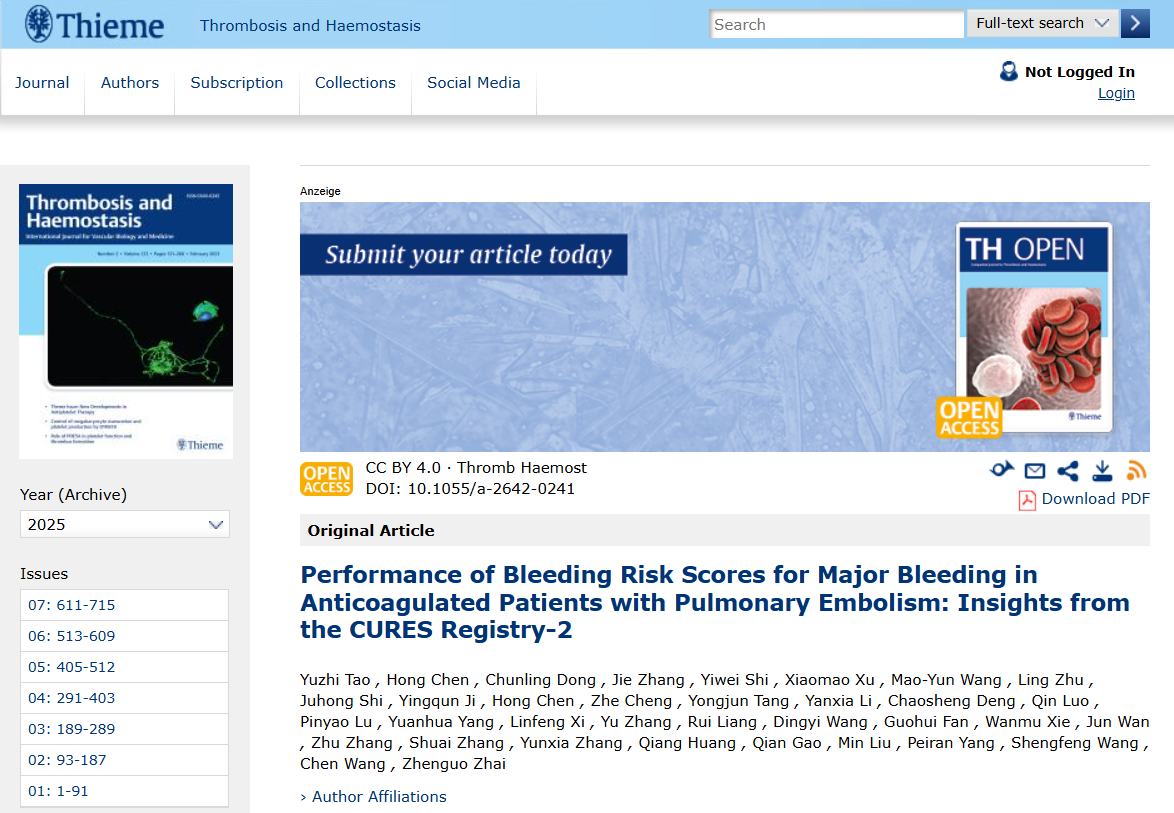
Bleeding Risk Scores in Anticoagulated PE Patients – Thrombosis and Hemostasis
Thrombosis and Hemostasis shared a post on LinkedIn:
“Article on Bleeding Risk Scores in Anticoagulated PE Patients.
Read our interview with lead authors Yuzhi Tao and Zhenguo Zhai.
TH: Why did you (and your colleagues) write this paper? What was its main purpose?
Yuzhi Tao and Zhenguo Zhai: We wrote this paper to address the critical issue of bleeding risk assessment in pulmonary embolism (PE) patients, particularly in East Asian populations. Despite the availability of several bleeding risk scores, most of these were developed in Western cohorts and have not been validated in large East Asian PE patients, who may have different genetic and clinical profiles.
The main purpose of this study was to evaluate the performance of these scores in predicting major bleeding (MB) risk in PE patients, with a focus on the RIETE, PE-SARD, Kuijer, BACS, HAS-BLED, ATRIA, and DOAC scores, and to assess their applicability to PE patients in China.
What are the main conclusions?
Y.T and Z.Z: The study found that the seven bleeding risk scores demonstrated moderate predictive ability for MB in PE patients, with AUCs ranging from 0.6 to 0.7. The RIETE BRS had an AUC of 0.70, indicating modest predictive ability, and could potentially help identify patients at low risk for bleeding. Furthermore, in patients classified as low risk by the RIETE BRS, initial treatment with direct oral anticoagulants (DOACs) was associated with fewer composite adverse events within 14 days compared to low-molecular-weight heparin (LMWH). While bleeding risk scores show potential, further validation is needed, particularly in East Asian populations.
What are the paper’s implications? to the public? to medical professionals?
Y.T and Z.Z: The RIETE BRS showed modest performance in assessing bleeding risk in Chinese patients with PE, potentially aiding in developing personalized anticoagulation strategies. It also emphasizes the ongoing efforts needed to improve the quality of care and minimize complications, such as bleeding.This study highlights the importance of personalized risk assessments for specific patient groups. Incorporating risk scores into the management of PE patients could help improve patient outcomes. This study underscores the need for further validation of bleeding risk scores and the exploration of more suitable risk scores for specific groups. Utilizing bleeding risk scores with other patient-specific factors could support better-informed decisions regarding anticoagulation therapy in PE patients.”

Title: Performance of Bleeding Risk Scores for Major Bleeding in Anticoagulated Patients with Pulmonary Embolism: Insights from the CURES Registry-2
Authors: Yuzhi Tao, Hong Chen, Chunling Dong, Jie Zhang, Yiwei Shi, Xiaomao Xu, Mao-Yun Wang, Ling Zhu, Juhong Shi, Yingqun Ji, Hong Chen, Zhe Cheng, Yongjun Tang, Yanxia Li, Chaosheng Deng, Qin Luo, Pinyao Lu, Yuanhua Yang, Linfeng Xi, Yu Zhang, Rui Liang, Dingyi Wang, Guohui Fan, Wanmu Xie, Jun Wan, Zhu Zhang, Shuai Zhang, Yunxia Zhang, Qiang Huang, Qian Gao, Min Liu, Peiran Yang, Shengfeng Wang, Chen Wang, Zhenguo Zhai.

Read the full article.
Stay updated with the latest news and insights in Hematology with Hemostasis Today.
-
Nov 27, 2025, 16:00Nathan Connell on WFH AI Summaries from the Global Forum
-
Nov 27, 2025, 15:49Piotr Czempik: Rethinking Coagulation in Acute Liver Dysfunction
-
Nov 27, 2025, 15:35Overwhelmed? A Leader’s Guide from Mark Crowther to Getting Back on Track
-
Nov 27, 2025, 15:10Wolfgang Miesbach’s Top 10 Picks for TTP and Thrombosis from ASH 2025
-
Nov 27, 2025, 14:24ICCBBA’s Executive Director Eoin McGrath Chairs a Dynamic Session on AI, Innovation and Informatics in Transfusion Medicine
-
Nov 27, 2025, 13:26Wolfgang Miesbach’s Top 10 Picks for Bleeding Disorders from ASH 2025
-
Nov 27, 2025, 11:19Priya Prasad Presents a Case of Severe Hypotensive Transfusion Reaction
-
Nov 27, 2025, 04:07Eugene Tang Presents Highlights from UK Stroke Forum 2025
-
Nov 27, 2025, 03:47Michael Makris: I Believe the Time Has Come to Consider Emicizumab Up Front in Persons with Acquired Hemophilia
